Prior art searching is a critical step for intellectual property (IP) protection, particularly in patent filing, but which of the available prior art search tools is right for you? Jens Schlehahn, Subject Matter Expert in Patents at Questel, explains what makes a great prior art search tool and shares some key contributing factors to increased productivity.
Prior art searching involves a comprehensive examination of existing patents, scientific literature, and other public disclosures to determine if an invention or idea is novel. The importance of prior art searching cannot be overstated in today's fast-paced technological landscape. It helps inventors and companies avoid potential infringement issues, saving them from costly legal disputes down the line. Moreover, it provides valuable insights into the state of the art, enabling them to refine their inventions and avoid reinventing the wheel.
Why Prior Art Searching Is Relevant Today
In an era where innovation is key to competitive advantage, understanding the existing IP landscape through prior art searching is crucial. It not only ensures the robustness of one's own IP rights but also fosters informed decision-making in strategic planning, R&D direction, and market positioning. Therefore, prior art searching remains highly relevant and indispensable in today's IP-driven economy. To this end, the ability to conduct proper prior art searches is a crucial element. In this article, I will shine a light on key contributing factors to enable competent searchers to leverage patent search and prior art search tools.
What Should Prior Art Search Tools Do?
Prior art search tools are instrumental in streamlining the process of identifying existing patents and public disclosures. These tools leverage advanced algorithms and databases to sift through vast amounts of information, significantly reducing the time and effort required for manual searches. They can help pinpoint relevant documents and patents, providing a comprehensive view of the existing IP landscape. This aids in assessing the novelty of an invention and mitigating the risk of infringement. When it comes to the features of prior art search tools, several aspects are crucial:
- Firstly, the tool should have access to extensive and up-to-date databases, encompassing patents from various jurisdictions and scientific literature. The raw data needs to be enhanced to improve searchability, such as data normalization, assignee clean-up or grouping of individual patents to prosecutions or patent families. Foreign language documents need to be accurately translated at least into the lingua franca English.
- Secondly, it should offer advanced search capabilities, including keyword, classification, citation, similarity, and semantic searches, to cater to different search strategies. The ability to filter and sort results based on various parameters such as date, relevance, and jurisdiction is also important for efficient analysis. Reliable and up-to-date legal status data is a requisite for freedom-to-operate searches. For industries dealing with chemical compounds and biological sequences, the tool should be capable of conducting specialized searches.
- Lastly, a user-friendly interface and visualization features can greatly enhance the usability of the tool, making it easier to navigate and interpret the search results.
Let's dissect these features and break them down to learn what kind of aspects are critical and need to be considered if benchmarking different tools and deciding on one.
Data Coverage in Prior Art Search Tools
The data coverage is a key contributor. A patent database is only worth its name if it indeed contains global patent information. We need to have a look at the amount of national patent offices covered. To this end, ensuring coverage of both prominent offices, such as the USPTO, EPO or CNIPA, as well as less common or exotic patent offices is mandatory. While it is a struggle to connect the offices of all formally acknowledged countries in the world, we need to strive towards it. To benchmark coverage details, providers of prior art search tools offer a summarized count of full-text and bibliographic sources.
In short, Questel covers 99.7% of all patent filings
between 1980 and 2022.
– WIPO statistics
However, a simple count of sources is not sufficient. An office could be counted as covered, while in reality only a fraction of the available timeframe is covered. Neglecting years of innovation and potentially thousands of IP rights. For a better qualitative grasp, considering the temporal coverage per patent office is important. Do we cover the German Patent Office since 1877 or since the new millennium? The difference can mean the world.
A patent is a look into the past due to the delay between application and publication. A tool may further delay access to the publications by having prolonged or unstable update cycles. A database provider needs to ensure periodic updates at least on a weekly basis.
"If your organization has specific sales markets or production locations, it is worth investigating the coverage of your prior art search tool provider. Is the jurisdiction covered, including temporal coverage? If it's not, you risk getting stung as you have a blind spot for IP rights."
Cyril Mavré
Questel
Director of Consulting
It is useful to integrate non-patent literature (NPL) in the search tool. While a prior art search tool primarily covers patent information, contents in NPL can also limit your patent application. Therefore, it is very handy to run the search on journals, research projects, or defensive publications as well.
Once accumulated, the raw data in itself is not suitable for searching. To be able to use this data effectively it needs to be enhanced.
Patent information is structured. The specification is divided into different fields by default, such as Title, Abstract or Claims. However, if a prior art search is not going anywhere due to difficulties in finding relevant documents, searchers might opt for searching the complete description. Searching one additional field makes a lot of difference as you drastically increase the searched text volume. This has negative effects by significantly increasing your false positives, which must be skimmed through. This costs time and is inefficient.
Prior art search tools can mitigate this by providing a summary of the patented invention, identifying key sentences and paragraphs that describe the patent as a whole or discussing advantages and drawbacks. This can be aggregated into separate, additional fields which can be searched. By opting to search these fields you do not increase your false positives as much yet can retrieve additional quality results (see figure 1, below). From my personal experience, this feature has saved many hours of skimming through irrelevant results.
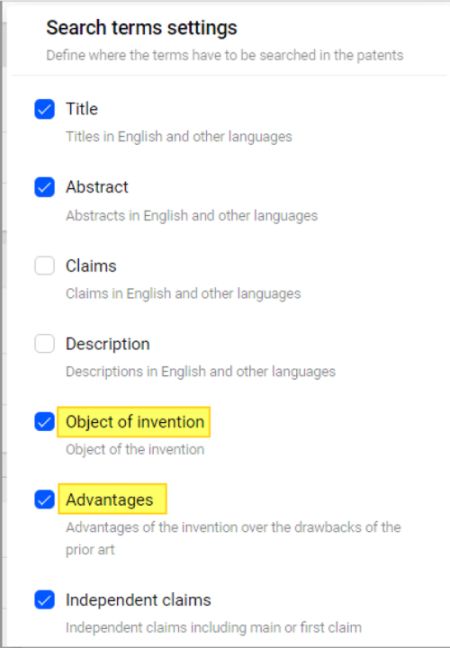
Figure 1: Two additional fields provided in Orbit Intelligence – Object of Invention and Advantages. ©Questel
Another example is the assignee information which is the foundation for competitor monitoring and analysis and relevant for prior art identification. Large corporations sponsor an extensive list of subsidiaries. It is difficult to collect information about which company is owned by whom. Ownership data is not readily available and publicized as patents. You need a solution as you might miss critical IP rights hidden in a subsidiary. We bridge this gap by connecting our patent assignee data with corporate tree data. We apply and cross-reference the data enabling thorough competitor searches as shown in figure 2 (below).
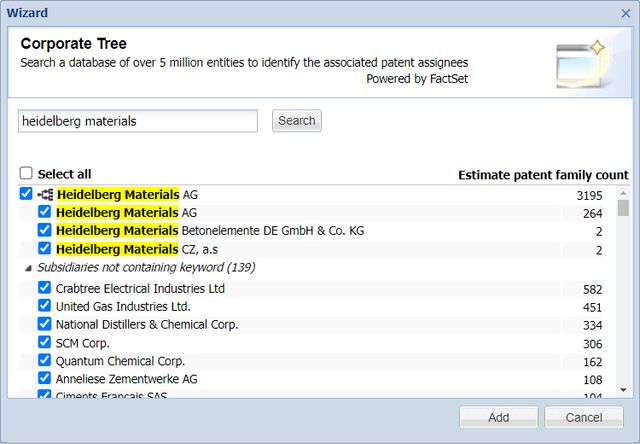
Figure 2: Corporate tree of Heidelberg Materials including subsidiaries without the corporate brand name. ©Questel
As I started my IP journey in IP consulting seven years ago, I learned the hard way how important translation is to prior art searching. After hours spent trying to figure out if a Far-East publication affected the novelty of the invention disclosure – sometimes I waved the white flag and surrendered. Reading nonsensical translations without any structure denied any serious recommendation. This dramatically changed in the last years with the arrival and adoption of neural machine translation. Previously indecipherable translations suddenly made sense, became readable and a proper analysis was possible.
"At Questel, we deploy state-of-the-art neural machine translation to provide quality translations at all times. This enables users of our data to understand global patent information including Asian languages which have proven difficult to navigate before the arrival of neural translations. If new neural translation algorithms surface which improve quality, we retranslate the patent corpuses. Currently, it is a dynamic and evolving technology with room to improve while already drastically improving translation quality."
Amandine Kandi-Masakidi
Questel
Product Manager, Data
This enables global prior art searches without additional language requirements in Japanese or Mandarin. It is a must-have!
Search Capabilities in Prior Art Search Tools
To find relevant patents we need a search engine that can consider multiple parameters. The deployed search methodologies vary from searcher to searcher which means the tool needs to be suitable to multiple techniques and methodologies. Let's consider the building blocks that create a great search tool.
A fundamental aspect in prior art search tools is the keyword search and the ability to define the searched fields. Precise searching will focus on key fields, such as Title, Abstract or Claims. Truncators are vital to keyword searching as they can cover different spellings, word endings or plural forms without the hassle of creating an exhaustive list. It is important to check how many truncations are possible per keyword and if both left- and right-hand truncations are allowed. This creates easily maintained search strategies.
The ability to either search very broadly or very narrowly is a common part of search methodologies. An example methodology is shown in figure 3 (below). Flexibility in executable methodologies reflects in available operators. Most tools offer Boolean operators (AND, OR, NOT) which can cover the broad searches. More importantly, we need to be able to search keywords in a well-defined proximity. For this end, proximity operators are used that only trigger results if a condition of proximity is fulfilled. It could be a distance in words, the same sentence or the same patent field in which keywords are retrieved. It is a powerful addition to your search strategy.
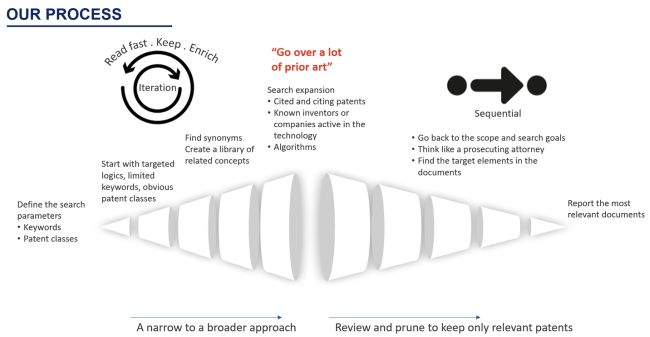
Figure 3: A common search methodology. ©Questel
Citation searching allows users to benefit from the work of examiners who already conducted a prior art search and from my perspective is a must-have. Here you can gain flexibility by having options on which citations are to be retrieved. Is it all citations, examiner's citations only or only citations with a rejection code?
Semantic and similarity searching have entered the picture in the last maybe five years and are here to stay. In combination, these searches can at least complement if not to an extent replace manual searching. Though this is a black box in most systems, it does give you another view. A mechanical engineer will see only a mechanical answer to a problem, but a semantic engine will be agnostic, see an electrical answer and rank patent differently. In a few seconds, you have the results. If it is not retrieving good results, no time has been wasted!
Think of a good invention disclosure. This is fed into the semantic search, which returns a list of extracted concepts. These concepts, validated by a searcher, are compared against the patent database and a patent list ranked by relevance is provided. Starting at the top of the list, with the document deemed most relevant, the searcher chooses one or multiple documents upon review which are very close or on the topic of the invention disclosure and conducts a similarity search. This similarity search automatically extracts concepts of the chosen patent documents, associated patent classifications, citations, and common priorities and calculates the distance or closeness to other patent families. As a result, it presents an even more precise list of patents around our initial invention disclosure. Upon skimming through this list of patents there is a high chance novelty-destroying patents are presented.
Accurate and up-to-date legal status data is crucial for effective prior art searching, including freedom-to-operate searches. It provides a clear picture of the current IP landscape, helping to identify patents that are in force, expired, or abandoned. This information can significantly streamline the search process, as it allows researchers to focus on relevant patents and disregard those that no longer hold legal significance. Furthermore, it can help to disarm potential infringement cases by identifying inventions already part of the public domain.
Depending on the industry it might be necessary to conduct searches on small molecules or biosequences and amino acids. It is beneficial if these search capabilities are well integrated into the prior art search tool and it allows for the combination of conventional patent, molecule, and biosequence searching (see figure 4, below).
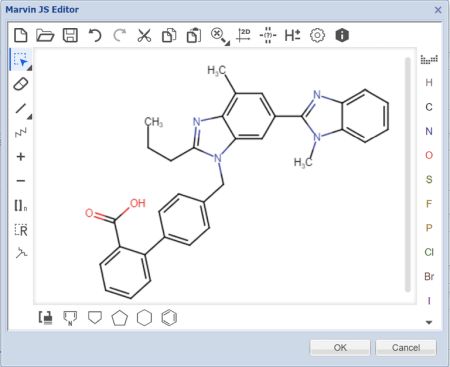
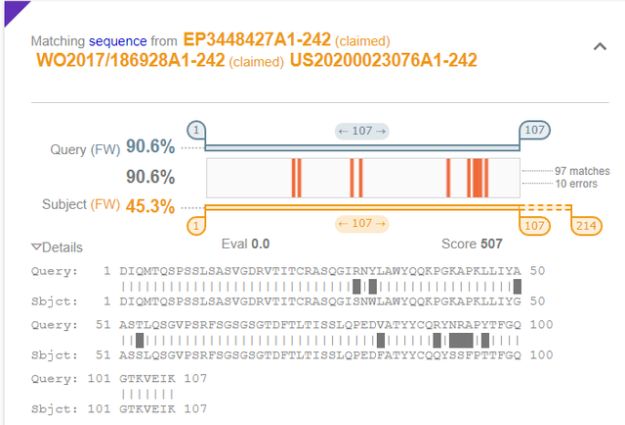
Figure 4: Chemistry search interface (top) and alignment information of a biosequence search (bottom). ©Questel
These are just the capabilities for prior art searching. There might be additional requirements outside this perimeter and if possible it would be beneficial to do even more in a single tool. Strategic analysis and reporting capabilities. An alert review process to disseminate patent information among engineers and report feedback to the IP department. Technology and competitor monitoring via alerts. These are all features integrated into Questel's Orbit Intelligence solution.
User Interfaces of Prior Art Search Tools
Every patent search arrives at the phase where fine-tuning the query is stopped and instead, the results are analysed and looked at. Skimming through the results to determine the relevant from the irrelevant results. It is important that the tool facilitates this process and makes it easy to assess all relevant information with as few clicks as possible. The ability to tailor the user interface (UI) to display all necessary information with minimal mouse clicks prevents cognitive overload and fatigue while reducing the time spent navigating through menus. This streamlined approach allows users to focus more on analysis and decision-making. Most searchers today have a multi-screen setup, therefore; it is very beneficial to be able to distribute the information on multiple screens.
Retrieving the searched keywords in lengthy patent specifications can be tricky. An inbuilt highlighting module which automatically transfers search keywords into coloured highlighting schemes does the trick. Even better if the highlighting can be saved, built upon and reused later and supports proximity operators to only show specific highlights if another keyword pops up in close proximity.
The traceability of search results and explanations for why a particular result was retrieved is important to put the user in the position to challenge or accept findings. (see figure 5, below). This puts searchers in the position to be able to justify any conclusion in front of management. It also supports further crafting and honing of the search query.
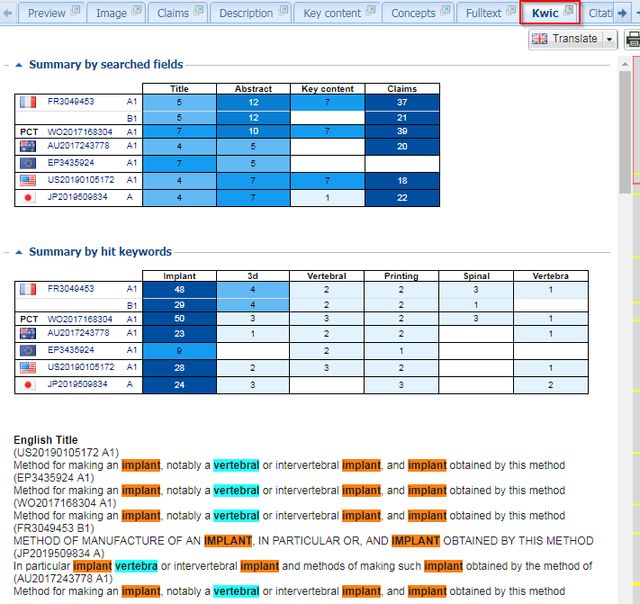
Figure 5: The Kwic (keywords in context) tab in Orbit Intelligence enables a fast review of keyword hit locations to understand the context. ©Questel
Patent images are supporting documentation contained in patents. These images contain numeral references to technical parts of the invention. Identifying the number in the image and locating it in the patent description can be difficult especially if done repeatedly. This can be avoided by enhanced links between the image references and the references in patent claims or descriptions. If available such a feature eases the manual burden on the searcher allowing focus on the technology information contained as shown in figure 6 (below).
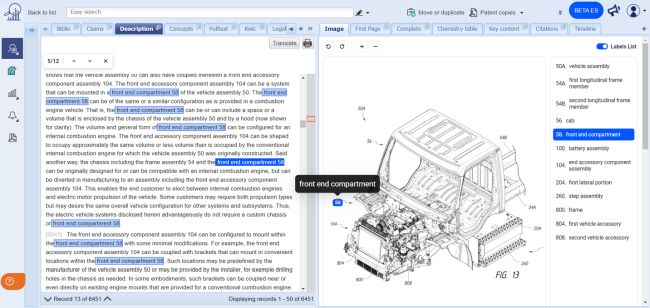
Figure 6: Our ImageLink feature in Orbit Intelligence ensures fast patent analysis. ©Questel
These features collectively contribute to effective and efficient prior art searches.
How to Choose Between Prior Art Search Tools
In essence, your prior art search tool is a powerful ally in the complex world of patent search and analysis. When choosing between prior art search tools, it's about finding the right balance of features that best suits your needs. The value of a good prior art search tool lies not in being the best in every single category, but in having the optimal mix of data coverage, search capabilities and user interface that allow users to achieve the best results as efficiently as possible.
The best data coverage does not help you if translation quality is lacking. The best data coverage does not help you if you don't have the jurisdictions of key locations of your business activity covered. The best user interface does not help you if the fundamental data is lacking.
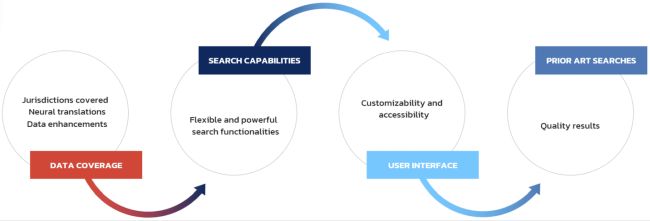
©Questel
Investing in a good prior art search tool is not just a good idea – it's a smart business decision. Questel has more than 40 years of experience in IP business information. As an end-to-end provider, we offer software and services along the patent lifecycle, including our software-as-a-service (SaaS) solution Orbit Intelligence. We are confident in having the best prior art search tool available on the market today.
The content of this article is intended to provide a general guide to the subject matter. Specialist advice should be sought about your specific circumstances.
